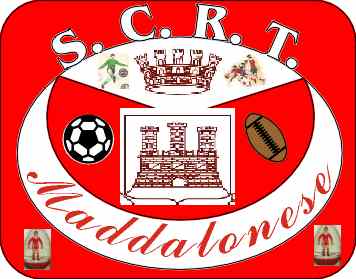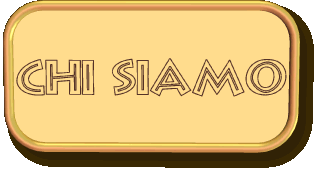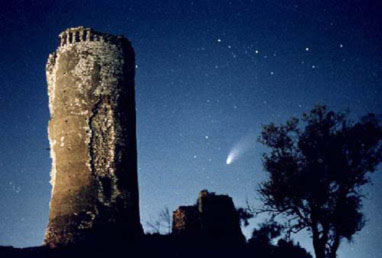
 SUBBUTEO
SUBBUTEO
ASD Calcio e Rugby da Tavolo
Maddalonese

Federazione Italiana Sport Calcio da Tavolo
History

We are
Poster
Accessories poster
Stadium
Accessories list
Teams list

Boxes
LINKS
The official site of the Federation Italian Table Soccer where it's possible to retrieve information on the competitive activity.
The site of the Subbuteo lovers where you can discuss of Subbuteo and Table soccer
A site with indication and technical support
The photos and the picked history in this page it is of ownership of the respective authors. Here it has been synthesized without thin of profit, but only to favor the knowledge of the city of Maddaloni.
ANYBODY WANTS TO PLAY TO SUBBUTEO-TABLE SOCCER IN THE ZONE CAN PHONE ME TO THE NUMBERS PRESENT IN THE SITE OR TO WRITE THROUGH E-MAIL TO ADDRESSES:
antoa@libero.it or anarsoft@libero.it
Little history of Maddaloni
The city of Maddaloni, with around 40000 inhabitants, is an important agricultural and industrial center of the province of Caserta, with activity in the food sector, of the cement and of the electronics well connected to regional and national level from aces of road and railway connections. Over the industrial importance, it is an ancient and interesting town, with rich artistic patrimony, situated to the feet of the hill S. Michele, surrounded by a territory that preserves abundant testimonies of a rich and interesting past and it offers ample and amazing visions of the landscape of inside Campania. Its name appears for the first time, in the form "Mataluni ", in 774, in a document signed by Arechi, Longobardo prince.
In the underlying lowland the ancient city of Calatia was situated surrounded by a rich and interesting necropolis. Calatia was busy a first time from the Consul Caio Giunio Bubulco in the 309 a.C. and it was given to the Romans in 211, to the time of the second punic war, after having sided for Annibale. After the destruction of Calatia in the 862 from the Saracens, the inhabitants were sheltered on the hill where they founded the suburb Mataluni.
From 1465 it was feud, with the title of dukedom, of the Carafas, to which it uninterruptedly belonged for over three centuries. It was one of the centers of the baronage of Earth of job, always rebellious to the monarchy. The most florid period for Maddaloni was the seven hundred one, as they attests the numerous architectural, civil and ecclesiastical testimonies. A characteristic handicraft activity of Maddaloni is the manufacture of the chairs heritage of the glorious and various handicraft activity of the past. The most ancient nucleus is set to the hill in zone lived by remote epoch; subsequently the city developed toward the lowland. Between the monuments of historical-artistic merit and sites of landscape interest inside the city and shed in its territory, we remember: the church of the Annunziata, whose form is substantially due to the restructuring performed in the first years of the sec. XVII; the church of the Corpus Domini, with elegant bell tower on sketch of Luigi Vanvitelli; the little church of S. Agnello, currently desecrated and in bad state, whose bell tower has in the base great rocks of Roman age and leftovers of a portal to closed ogiva; the Baroque church of S. Francesco in Assisi with tall dome and valuable objects of art to the inside; the National Boarding school, already convent of the Franciscan ones, in whose cloister is still preserved a orange tree planted, according to the tradition, from S. Francesco; the Civic Museum that, in lack of other specific structures, welcomes also to its inside numerous testimonies coming from the ancient Calatia - among which ceramics, bronzes and other objects.
Of great interest, also from the landscape point of view, it is the Castle. Preceded from the cylindrical inferior tower, of the last decade of 13OO, the Castle, remembered in the Middle Ages with the name of Castrum Kalata Maddala, is to irregular plant and it has a square tower. An ample panorama embraces you that spaces, to 360° degrees, from the M. Somma, to Naples, to the islands of the gulf, to the lowland bell. To the extremity of the hill the complex finishes with another tower, smaller than that inferior, perhaps of longobarda origin. Other place of landscape interest, from which the vision of the inside territory is possible from the Mainarde to the Maiella, is the peak of the hill of S. Michael. Still in the outskirtses of Maddaloni they are to signal the M. Calvi and the M. Longano, and finally, to few kilometers of distance the bridges of the valley, gigantic construction in three orders overlapped of arcs, among the more realizations notes of the kingdom of Charles of Borbone. They had been built by Luigi Vanvitelli since 1753 to 1759 to make the Carolino aqueduct that, with the deriving waters from the M. Taburno, it feeds the falls of the park of the Caserta palace.
Numerous the archaeological presences, that it surrounded the city of Calatia in ancient epoch and are on the whole territory that they testify as the intense use of the area was not limited to the urban circle and the surrounding necropolises, but it involved ampler territories.
The Maddaloni Castle
Who reaches Maddaloni is certainly attracted from the tower that it is found on the hill of the Tifata and he is attracted then from the castle of Roman origin dipped in the green. You knows that Maddaloni has a very ancient history tied up to the castle. Giacinto De Sivo recovered a test of the existence of the castle already strengthened to the epoch of the punic wars. In one his book he quotes, in fact, a footstep of the " Historiaes " of Tito Livio (Lib. XXV) in which is written: " In valle oculta, post Tifatam, montem imminenten Capuae, consedit. Adveniens quem Castellum Galatiam praesidio vi pulso coepisset…".
Today it is impossible to verify similar affirmation, but we can be considered that the history of Maddaloni is tied up to that of Rome for the numerous founded finds (clays, bronzes, statues, etc.)
But the first document in which Mataluni is quoted expressly provided of a castle is dated 1099 (Castrum Kalato Maddala). The strengthened installation, that rises in a strategic position, is constituted by three nucleuses: the castle was built in central position, the tower of Artus tall 33 meters was raised next to the castle, while the small superior tower, said Castelluccio, tall 20 meters is set on a taller and isolated hill. Such constructions were built so in longobarda epoch for the protection of the inhabited nucleuses. In Norman epoch, with the unification of all the Southern Regions, Mataluni had the Regal garrison and it was strengthened. With Ruggiero II the Norman, that in 1134 he strengthen the Castle, became place of meetings and stay of important characters of the monarchy. The Castle of Mataluni, was sheltered in sveva epoch, during the kingdom of Federico II and it became wealthy in angioina epoch of the cylindrical tower with polygonal base. This tower, erect among 1390 and 1402 from Charles Artus of Angiò, that held the feud in such epoch, represented a strengthening of the defensive system. Purchasing the feud, Charles Artus, preserved it with the strength from the weapons and increased of it and improved the defenses making to build the cylindrical tower that anchors today we admire and that is the symbol of Maddaloni. In the autumn of 1460, the castle was attacked, conquered and datum to the fire from Ferrante in Aragon in war against Giovanni of Angiò and the rebellious barons.
After the fire the inhabited nucleuses were moved and reconstructed in lowland and the whole underlying level zone the castle was systematized by the Carafas, when, created the county by Ferrante in Aragon, the captain Diomede Carafa was invested some feud, whose family will hold up the fates of Maddaloni for 350 years. In 1799 with the abolition of the feud and the strangeness of the last duke Marzio Domenico V, the dynasty of the Carafas ended. The abandoned and demolished castle, with the underlying hills were inherited by the Prince of Colobrano that in 1821, revenges them to Agnello De Sivo, child of Giacinto, that turned the castle and the towers into a splendid abode that was center in the age borbonica of splendid parties and wisecracks of hunting. On September 14 1860 Maddaloni was busy from the garibaldinis. With Garibaldi to Maddaloni the borbonic epoch ended and the Kingdom lasted 730 years and it started a period of degrade. To the time of the second world war the castle was definitely abandoned and left to the looting of the allied troops.
THE BRIDGES OF THE VALLEY
The Vanvitelli masterpiece was commissioned by the king Carlo III of Borbone, from which the name "carolino", with the purpose to feed the anticipated spectacular games of water in the gardens of the Caserta Palace. It represents one of the greatest works of hydraulic architecture of every time.
Departing from the Taburno sources of the Taburno the aqueduct arrives, after a run of 38km, with an inclination of 0.5 mm for meter, to the fall of the Royal Building, with a course of water that reached the 700 liters for a second.
The beginning of the jobs of construction of the "arcades", as the Vanvitelli loved to call her, had beginning in March of 1753, two months later it followed the laying in work of the first stone to the sources of the Fizzo (21 May); they finished in the November of 1759 and the whole aqueduct was inaugurated the 7 May of 1762.
Cost of the whole work: 600.000 dukedoms.
With its 529 meters of length, 55.80 meters maximum high, three orders of arcades of 19, 28 and 43 for a total of 90 arcades, the great bridge unites the Longano mountains (east) and Garzano (west).
Behind the superior order of arcades, where the water flows, a small road was realized covered by white basolato. Through small passages drawn among the various arcs it is possible to easily cross, in the whole length of the work, the orders of arcades mediate and superior.




ETA' DEL RAME
La presenza più antica a Maddaloni è attestata all'età del rame (2500-1800 a.C.). Gruppi di pastori stanziavano sulle colline di S.Michele, pascolando le loro greggi che rappresentavano la principale forma di sostentamento. Le donne modellavano vasi di argilla necessari per la cottura dei cibi ed il trasporto dell'acqua. Gli uomini procuravano il cibo con la caccia e costruivano capanne di arbusti e di foglie, a volte ricoperte di argilla. Le notizie riportate sono confermate dal rinvenimento di numerosi frammenti di vasi (ceramica a scaglie riferibile alla Civiltà del Gaudio) in un ampio pianoro, servito da una sorgente e da una riserva naturale di argilla posta alle spalle della torre piccola longobarda. I frammenti, catalogati, sono ora esposti presso il Museo Civico della città.
ETA' DEL BRONZO (1800 - 900 a.C.)
Gli utensili usati: coltelli, asce, raschiatoi, sono ancora, per la maggior parte, di pietra (selce). Si scopre l'agricoltura, l'uomo scende in pianura dove il terreno è più fertile. E' ipotizzabile in questo periodo la presenza di due insediamenti: il più vecchio, in collina, il nuovo, in pianura, dove poi sorgerà Calatia
ETA' DEL FERRO
Gruppi di capanne si espandono in pianura. Si sviluppa notevolmente l'agricoltura, con il ferro si costruiscono nuove armi, l'abbigliamento femminile si arricchisce di bracciali e fibule (le nostre spille). Glio Osci, abitanti di queste terre e nostri più lontani antenati, acquistano ceramiche e oggetti ornamnentali dalle vicine colonie greche di Ischia e Cuma. Migliora per imitazione la produzione artigiana locale. L'antico insediamento viene conservato come posto di vedetta e di controllo delle vie di comunicazione.
SECONDA ETA' DEL FERRO
Il probabile sistema sociale tribale porta all'unificazione. Si raggruppano capanne che vengono circondate da una palizzata difensiva e da un fossato. Si selcia la strada principale, la futura via Appia. Il lavoro dei campi è notevole. Gli Etruschi porteranno da noi il sistema della coltivazione alta della vitetra filari di alberi. Sorge Calatia, la cui probabile etimologia "cal" riporta al significato di luogo fortificato. L'ordine politico e religioso è tenuto da un capo, alla cui morte gli vengono tributati grandi onori. Questa fase è attestata a Calatia da tombe con ricchissimo corredo (monili in oro, argento, elettro ed ambra) che risalgono allo VIII secolo a.C.
PERIODO ETRUSCO
Nel VI secolo a.C. gli Etruschi sono presenti nel nostro territorio. Calatia entra a far parte di una confederazione di 12 città ( la dodecapoli etrusca) con a capo Capua. Vasi di bucchero (argilla mescolata a polvere di carbone, tipica produzione etrusca) con un particolare aspetto nero brillante che imita il metallo, sono stati ivi recuperati dalla Sovrintendenza. Un aristocratico di Vulci, nel Lazio, Vetes Kielas (Vete Chiela), interessato al commercio del vino, invia, nel 525 a.C. circa, un' anfora vinaria a Calatia con la scritta in caratteri etruschi. In questo periodo alle capanne si sostituirono le case in pietra ricoperte con tetti di tegole.
PERIODO SANNITA
Sconfitti dai Siracusani, nella famosa battaglia di Cuma del 474 a.C., gli Etruschi vengono attaccati duramente anche dai Sanniti in cerca di fertili pianure. A Capua vengono uccisi i capi etruschi e la città divenne sannita. Anche Calatia segue la stessa sorte. Ora la città batte moneta con la propria zecca, con la legenda KALA, KALAT o KALATI. Fatto eccezionale conia anche monete d'oro. Nel 309 a.C. il console Caio Giulio Bubulco conquista Calatia che cade così nelle mani dei Romani. L'Appia, la più importante delle strade romane, attraversa Calatia che acquista ancora più importanza con il controllo delle vie di accesso al Sannìo. Nel 321 a.C. (anno 433 di Roma), durante la seconda guerra sannitica, l'esercito romano, sotto il comando dei consoli Spurio Postumio Albino e Tito Veturio Calvino, si accampa a Calatia, ma subisce l'onta delle Forche Caudine. Alleatasi in seguito con Annibale (215 a.C.), Calatia viene riconquistata e aspramente punita dai Romani e diventa cittadina "sine suffragio" (senza diritto di voto). Un famoso personaggio di Calatia, Aulo Attilius Calatinus, console nel 258 e nel 254 a.C. diventa dittatore nel 254 a.C. Nel 59 a.C. Giulio Cesare vi trasferisce una colonia di veterani. Calatia cade nell'oblio.Nell'era cristiana a Calatia si costruiscono molte chiese su vecchi templi; la più importante è quella dedicata a S.Giacomo, probabilmente episcopio della città.
IL MEDIOEVO
Calatia, sede vescovile, è attaccata e distrutta varie volte dai Saraceni (già nel V secolo il vescovo S.Augusto è costretto ad abbandonare la città, rifugiandosi nel vicino borgo di Mataluni). Distrutta definitivamente nel 880, anche i cittadini abbandonarono Calatia riparando nella più protetta Mataluni ed il vescovo preferirà spostare la sua sede a Casa Hirta (ora Casertavacchia). Nel cortile del Villaggio dei Ragazzi, già antistante il vecchio Palazzo Ducale, si svolgeva la fiera settimanale sotto il controllo del Duca. La piazza , nel 1702, come ricorda il Piccicchelli, era luogo di passeggio, riunioni, affari. Nel '600 Mataloni è uno dei più importanti centri del reame. Artisti illustri, come il fiorentino Giovanni Balducci, che dipinge il soffitto a cassettoni della Chiesa dell'Annunziata, Pompeo Landulfo, Marco Pino, i Funaro, Fabrizio Santafede, Paolo de Matteis, Mattia Preti e Francesco de Mura si avvicendano nella nostra città lasciando un patrimonio pittorico culturale di inestimabile valore. Nel 1734, Carlo III di Borbone, infante di Spagna, duca di Parma e Piacenza, viene a prendere possesso del Regno di Napoli. Maddaloni gli riserva grandi accoglienze. Nel Palazzo Ducale, Domenico Marzio V Carafa gli consegna le chiavi della città. Il munifico sovrano concede a Maddaloni il titolo di Città. Nel '700 Maddaloni conta circa 9500 abitanti. E' fiorente l'artigianato della maiolica (faenzari e riggiolari), della sedia impagliata (seggiolellari), quest'ultima ancora presente nella nostra città. Viene ampliata la chiesa del Corpus Domini su progetto del famoso architetto Luigi Vanvitelli, autore della Reggia di Caserta. Durante la costruzione del Palazzo Reale e dei Ponti della Valle, spesso il Re e la Regina si recano a Maddaloni, ospiti del Duca, per assistere alle esercitazioni di squadroni di cavalleria.






